#don’t take risks when driving a two ton metal machine
Explore tagged Tumblr posts
Text
for the love of god and/or all the things you even mildly enjoy in this world. If you’re driving and you’re about to miss your exit.
MISS THE EXIT. SHAVING OFF FIVE MINUTES OF TRAVEL TIME IS NOT WORTH WHAT COULD HAPPEN
#if you’re seeing me say this for the millionth time in the past ten minutes I’m not sorry#this is important#don’t take risks when driving a two ton metal machine#not even if the only risk is to yourself#roy talks#caps tw#tw caps#also no fatalities should have happened with the reason I made this post#and I was not involved in it nor was anyone I know#I just saw it happen#so I’m fine
9 notes
·
View notes
Text
youtube
Today in History: #TheMaxHeadroomIncident Nov 22, 1987 Two Chicago television stations are hijacked by an unknown pirate dressed as Max Headroom.
( https://en.wikipedia.org/wiki/Max_Headroom_signal_hijacking )
* I remember when this happened. It was an amazing Hack to me and my friends at the time. I remember my friend John obtained a video cassette of it like super quick. Like 2 days later and we were in Detroit and this had happened in Chicago so that was pretty quick for the time. Chicago was a 6-hour drive away and yeah we had all driven it at one time or another, but it just seemed so quick for him to have a tape of this. And it wasn’t like the whole Doctor Who episode, it was just the hacks on the tape.
Well, he wouldn’t tell us where he got it. He was a radio guy, that was what he was really into Radio, Like CBs, and stuff, and was always going on and on about how everyone was going to use phones in a couple of years and they were super easy to hack and you’d be able to listen in to anybody … I didn’t know enough about that to know if he was right or not. Maybe he was because he sure called it that everyone would have phones. But I don’t know about the listening in and all of that. Honestly, I am pretty sure that they are, or at least an AI is now.
Anyhow he was also one of my ‘Computer Friends’ and I don’t mean we knew each other on the net. At this time there wasn’t a public net. He (and a few others and me) were really, really into computers. You know getting them to do things, instead of just talking to each other or playing games on. We were all into getting them to other things.
I was mainly into what they could do in relation to controlling machines etc. I had this thought of applying industrial CNC (computer numerical control) into really, really refined art like Painting. But anyhow that’s another thing. I was a weirdo artsy-fartsy teen.
So Anyhow John had this tape. And we watched it, and were amazed as only like 16 year old kids can be when they see such a Fantastic act of rebellion.
Because you really had to know your shit to hack a live TV Broadcast. And you would have to be like right there at the tower and it would take a ton of power.
This was not something you could do just from a keyboard sitting around. I mean some serious planning and hardware would be needed. Also whoever did this had a pretty big set (at least enough room to spin that corrugated metal sheet behind ‘Max’).
And all of this really spun my head too. I mean I honestly thought that this could be the future of tagging. But instead of spray painting on a building… you could tag actual Live TV Broadcasts! Wowzers! How Amazing would that be?!!
but it wasn’t meant to be. I guess there’s rebellion and there’s a lot of work… And risk… I mean yeah we were all kids, but pissing off the FCC didn’t seem like a good idea at all.
Anyhow they never caught who did it either, and yep here is one of the best videos I have found about this Amazing piece of Rebellion from a million years ago when I was a teen.
0 notes
Text
"WHO THE FUCK DO YOU THINK YOU ARE?" #3

#Follow4FollowMyGuy asks: As an artist in uncertain times, how can I keep promoting my music from quarantine?
M$: The first thing you need to do is find some compromising evidence on a friend that runs a website. Then you blackmail them into letting you write a pointless Advice Column that no one actually cares about. That’s the most important place to start.

Once you’ve got that secured, and the money from the blog is flowing endlessly into your account, then you just hustle. Hustling is a lost art these days. There are so many online outlets, and so many different social media platforms that it can get overwhelming pretty quickly. The key is to not let that happen. Focus on one or two at a time. Get weird on Twitter and sneak in some links. Ask for questions on your Instagram story, then find a way to relate your answers to songs you can post. Dive into the hellscape that is Reddit and find a thread that your music fits with, and drop a link. Not all of this is going to work, but it’s worth a shot.
The other important thing to remember is that you don’t have to promote a specific song, or an album, or a video. Just interact with people. Everyone else is online all the time, so just be visible, be friendly, and be accessible. As long as you’re doing something online, no one is going to forget about you.
Maybe don’t use the band page to drop heart eyes on thirst trap photos. Slide into those DM’s from your own account, you know? The last thing you want is the fucking bass player seeing their reply first and stealing your thunder. But then again, all is fair in love and hardrock.
Dan Price asks: Can I have your milk money?
M$:

@FiendingForMosh asks: When are shows coming back?
M$: The real answer is that no one knows. Probably sooner than you think, which is also probably too soon. It’s kind of a lose/lose situation.
Live music is in a weird spot. To go from “Everyone needs to practice social distancing until we can get a handle on this extremely contagious thing” to “Well, it’s not contained, and we don’t have a vaccine, but fuck it. Go ahead and pack as many people as you can into a tiny, poorly ventilated space and let them all slam into each other” in the span of a couple of weeks seems insane.
There are some medical experts that say live shows shouldn’t start again until 2021. That’s not going to happen. That can’t happen. Every place that relies on a steady stream of smaller touring acts and local shows—which is almost all of them—will close if that’s the case. No one wants that. Venues need to make money and bands need to make money. The only way to do that is with shows.
What’s going to be really interesting is seeing who takes the risk. Some bands are going to hit the road two days after “shelter in place” ends. There will be venues ready to host the shows, and people dying to see them—no matter who that band is. The very idea of getting back out in public and seeing their friends is going to be enough for a lot of people. Those bands are probably going to do pretty well, and play for a lot of grateful people every night.
Then there are going to be other bands that take the whole rest of the year off. To them, the juice won’t be worth the squeeze. They’ll stay home, write new songs, make a new record, and continue to wait it out. The bands that take this route are probably the bands that are a little more established, and have other sources of income. Some bands can afford not to tour. Others can’t.
There are also going to be a lot of people who just don’t trust anyone in a large crowd for a while.
“I’d love to see that band. But there’s no way in hell I’m going to stand in the dark while a drunk, sweaty guy—still wearing a heavy denim jacket in fucking July for some reason—brushes his damp hair across my face as he tries to squeeze through an already tiny space.”
It’s weird, it’s scary, and it’s pretty unprecedented. But it is going to be okay. Live music will always be something that people enjoy, and there will always be someone who figures out how to make the most of it. Things aren’t going back to normal anytime soon, but maybe that’s a good thing. It gives everyone a chance to decide what the new normal is.
There is one upside that could come from this, and one that Milk Money wholeheartedly supports: Maybe venues/bars/clubs will actually keep their bathrooms clean, stocked, and operational.
Ahhh, who are we kidding? No one is going to learn anything from the last five weeks.
XtestpressX asks: Who are M$’s favorite current #SLCHC bands?
M$:
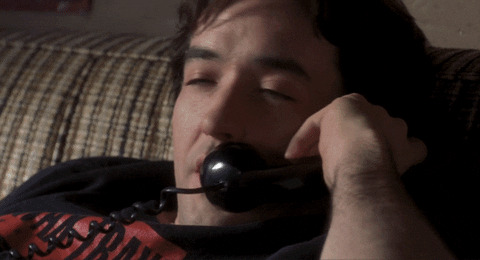
M$ PRESENTS THE #SLCHC2020LOVE THE MIXTAPE: 1. Victim To None - Sacred 2. Devoid - Another Life Wasted 3. Ape $hit - Pretty Neat ft. Dea Giokas 4. Degeneration XXX - Bitter End 5. Dirty Mike - Angel (Prod. by Teemane) 6. Zodiac Killer - Serpent's Tongue 7. Crow Killer - Close Grip 8. Witchtrial - Burn 9. Absent - Dimmed Love 10. Tamerlane - Absense
Run tha trak!
Milk Money Mixtapes
·
M$ presents #SLCHC2020LOVE The Mixtape
@StatuteOfLimitations asks: What is your wildest tour story? Dan$: As all of Milk Money will attest, my memory is not the hottest. But I’ve been blessed with a metric shit-ton of sketchy/amazing tour experiences, so here’s a montage of pretty true events... - Coming up with the idea for Milk Money with Trevor on west coast Cherem runs.
- Roger Miret teaching me his prison workout regimen in an old church in Switzerland.
- Watching Madball and Obituary festival sets in Turino, Italy from the fancy comfort of an above-ground pool.
- Breaking up fights between American soldiers and German hardcore kids.
- Breaking up fights between American soldiers and Japanese hardcore kids.
- Getting into fights with American soldiers in foreign lands.
- The time Lord Ezec asked me if I wanted to smoke some crack with him.
- The time the moon crashed into Idaho.
- Hiding outside the backstage tent of symphonic metal cover band Apocalyptica in a giant mud puddle during a Czech Republic downpour with Vinnie Stigma, waiting for them to take the stage, so we could sneak in and steal coffee from their espresso machine.
- Taking Matt Mascarenas to the beach for the first time in his life.
- Fuck Nick Cannon. - Watching an aggro road-rager freak and back down a steep-ass, 500-foot grassy slope into a cow pasture after he pulled us over to fight. - The Lightkeeper’s Trail (What's good, Countdown to Life/Broadway Calls?!?!?!) - Watching Sparky from Demented Are Go bite the head straight off a dead rat, pound a bottle of vodka, and say, “That’ll clean it up.” - Chasing a not-be-identified drummer from brothel to brothel in Graz, Austria to watch him dance with girls for a few seconds before running to the next brothel… just to make sure he didn’t get left behind by the bus.
- Not joining Hatebreed in a backstage jacuzzi full of actual erotic dancers. - 30 Seconds to Mars telling us we were “pretty heavy” when we shared a venue in Minneapolis. - Moshing in a Drum’n’Bass tent at a Euro festival with a not-to-be-identified NYHC band who were skying way high on ecstasy. = Learning so many important lessons the hard way while making all of my closest friends cuz… hardcore. Trevor$: I don’t have nearly as many globe-trotting adventures as Dan, but some of my favorite moments with my friends happened on tour. - Spending two full days at a Fazoli’s (the only kind-of vegan option in the city) in Grand Island, Nebraska on our first tour because the transmission went out 13 hours after we bought the van. - Directions to a venue that were “Turn left at the women’s prison, and drive to the end of the road. It’s in the junkyard.” Once inside the junkyard, getting the instructions “Stay away from the fences. That’s where the ladies have ‘yard time’ and the guards in the tower get really angry when we talk to them.” - Air guitar and autographs with a drunk guy named “Deth” in Tijuana. - Almost having to fight a promoter in New Mexico because he accused us of stealing a microphone, only to find out ten minutes after leaving that Bill accidentally put it in the pocket of his cargo shorts and forgot. - Swimming too far out in the Florida ocean and getting stopped by the beach patrol just before the shelf drops off and all the bull sharks hang out. - Going on tour without confirming anything, then having to beg every promoter to let us play when we showed up. - Trying to pretend there wasn’t a fight happening in the crowd until Jake pushed his drums out of the way to jump in at every single out-of-state show Tamerlane ever played. So what we're saying here is, once this plague blows off, GET IN THE FUCKIN VAN CUZ LIFE IS SHORT AND YOU SHOULD LIVE IT!
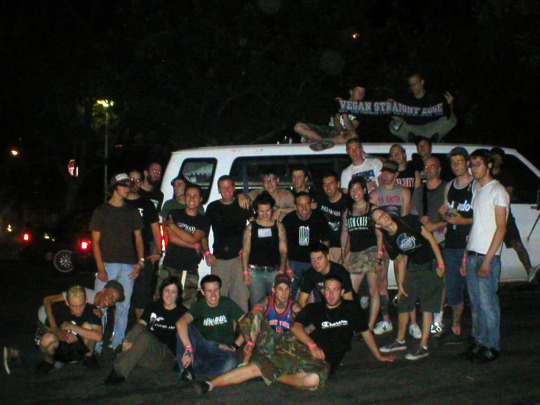
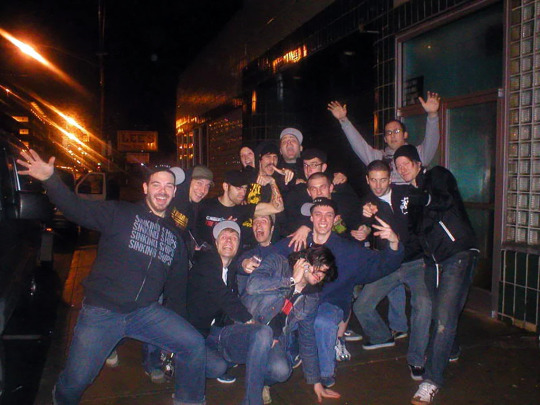

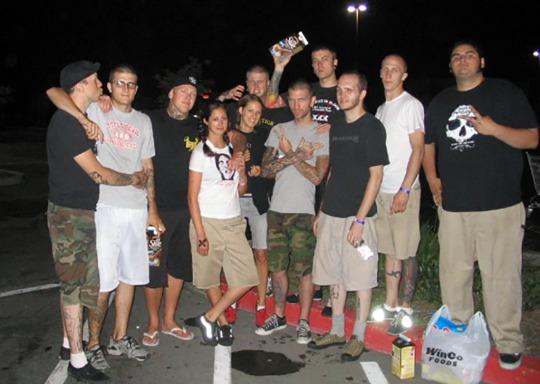
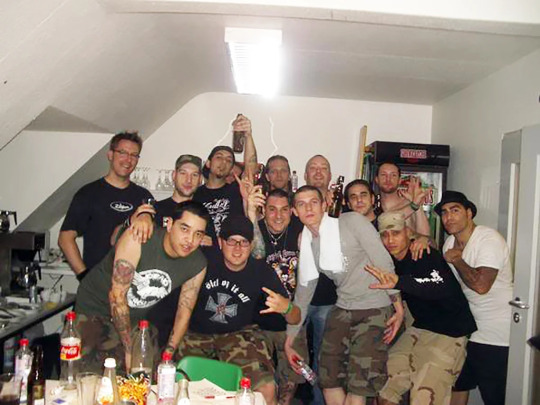
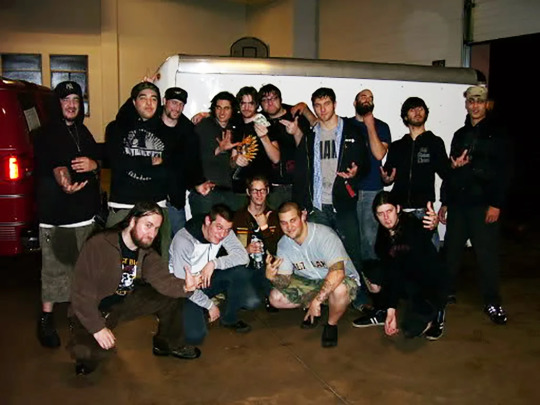
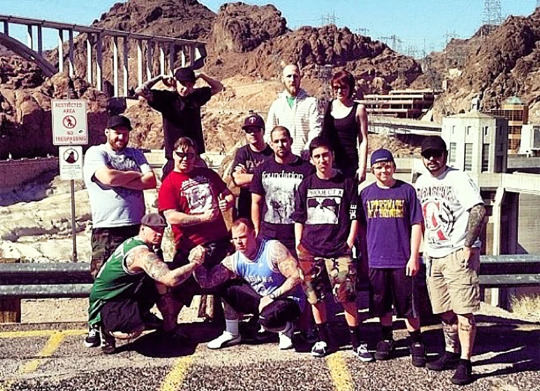
Until next time, this is Milk Money saying, “Tamerlane is not the Five Finger Death Punch of Salt Lake Hardcore."
0 notes
Text
13 Things You Need to Know About Blanton’s Single Barrel Bourbon

Product provenance is one of the most important things in food and drink right now. Much to its credit, Blanton’s Single Barrel Bourbon arrived on the scene well before we all became obsessed with place sourcing. In fact, Blanton’s effectively put “single barrel” on the map, insisting on hyper-craft bourbon at a time — in 1984 — when our drinks repertoire included lots of blue stuff and too much White Zinfandel.
In honor of learning from our mistakes, here are 13 things you need to know about Blanton’s.
It was the world’s first “single-barrel” bourbon.
Just like Velveeta Shells & Cheese, “single-barrel” bourbon wasn’t a thing before 1984 (so we have no idea how anyone had a decent weekend). But among the many generous acts of Elmer T. Lee’s career at Buffalo Trace was this final parting gift — the creation of a super-premium bourbon category, i.e., bourbon taken from one barrel and bottled as is. Not only did Lee revive the bourbon industry, he created a lasting category that almost every major bourbon producer answers to with a bottle of its own.
It’s a “high-rye” bourbon.
Blanton’s is distilled by Buffalo Trace in Frankfort, Tenn., which is famously mum about the exact contents of its Mash Bills # 1 and # 2. We do know that Blanton’s is distilled from Mash Bill # 2, a “high-rye” mash bill — meaning after the higher proportion of corn common in Buffalo Trace bourbons, the rest (or much of the rest) of the mash bill is made up of rye. Whereas wheated whiskies tend to be softer, a kick of rye in a mash bill tends to produce a bit more in the way of fruit and spice, which play nicely with caramel and char. Though it’s worth noting that the final flavor profile varies from barrel to barrel (that’s kind of the idea).
We owe it to a guy called Blanton and his thirst for good bourbon.
Yes, there was a Blanton — Albert Bacon Blanton. Lee named his game-changing single barrel for Blanton, who had worked his way up from 16-year-old desk clerk at what would become Buffalo Trace Distillery to distillery president from 1921 to 1952, growing the distillery exponentially and — no small thing — seeing it through Prohibition and World War II. Naming the Single Barrel for Blanton is a tribute: Back in the day, Blanton would put aside what he considered the best bourbon — from barrels aged in the center of the all-metal Warehouse H (see below). To this day, that’s where Blanton’s Single Barrel Bourbon comes from.
Single barrel isn’t a legal term.
Like the “all natural” on your bologna or “farm fresh,” quite possibly also on your bologna, “single barrel” isn’t a legally defined term in the United States. Yes, that leaves a lot of wiggle room for creative interpretation. But so far, the Alcohol and Tobacco Tax and Trade Bureau (a.k.a. the TTB, the paper-pushing folks in charge of labeling and regulating spirits) hasn’t set up a legal definition. So for now, we’re working on the honor system (and that never went wrong in whiskey, right?).
Legal or not, “single barrel” still really matters.
We’ll roll our eyes at “single-stalk corn syrup” and “single-pig salami” when they inevitably enter the market, but we take the implications of “single-barrel bourbon” seriously (because it’s actually a thing). Whereas bourbon in general is blended by brand and by distillery to create a desired flavor profile, a single-barrel bourbon categorically (but politely) rejects blending. Instead you’re embracing whatever inimitable magic the aging process has done to the whiskey inside a particular barrel.
Blanton comes from a famous warehouse.
Let’s face it: When warehouses are famous, it’s either because of a murder or a baler incident (which may or may not involve Michael Scott). So there’s almost never a fun reason to bring up “warehouse lore,” except of course in the case of Blanton’s, because Blanton’s is aged in Buffalo Trace’s famous Warehouse H, the distillery’s only all-metal rick house (or barrel-aging building) and the very place where Blanton himself would stow his select barrels of whiskey. Though unconfirmed, we assume he would visit them and quietly pet them in the middle of the night.
Blanton’s barrels are kind of coddled.
Most whiskies are machine-dumped, which sounds un-artisan and so far away from genteel southern bourbon that we’ll pretend we never learned about the practice. (In truth, it just means the barrel contents are mechanically overturned.) In contrast, Blanton’s barrels are hand-dumped, which sounds just a bit better (and looks like this), adding a level of persnickety care to the process for this bourbon.
Blanton’s barrels are also mildly tortured.
With the bourbon inside, Blanton’s barrels are aged for several years in Warehouse H. Since metal conducts heat, the walls of Warehouse H act like an amplifier for Kentucky’s temperature fluctuations, increasing the impact of heat and humidity changes, all of which encourages the barrels to absorb and then flush out the bourbon more often over the course of aging. And the more interaction between bourbon and barrel, the more flavor in the end.
There’s a ton of vital info on the labels.
Schools stopped teaching cursive for a while, but it’s making a comeback, probably because people realized the next generation wouldn’t be able to read the Blanton’s label (or perhaps they feared the emotional clumsiness of a world where emotion is expressed exclusively in emoji). That’s clutch for Blanton’s drinkers, since all that scrolly handwriting lets you know the barrel number, the number of the rick (or storage rack) the barrel was taken from, the proof your bourbon was bottled at, the final bottle’s ABV, and even the date the bourbon was dumped (and yes, this is the only time it’s not deeply depressing to commemorate a dumping date).
You can collect the horse stoppers. And it will drive you mad.
The adorable horse stopper atop every bottle of Blanton’s Single Barrel Bourbon each has a letter on it in a little circle to the lower left. Collect all eight and you get “B L A N T O N S” (and some peace of mind). FYI, the “S” shows the horse crossing the finish line; you can tell because the jockey is fist-pumping. But don’t join him in the winner’s circle just yet — double-check that your “Ns” aren’t the same N. The first is a regular old N, but the second should have a colon after it, as shown here.
There’s a risk of inconsistency from bottle to bottle.
That’s part of the magic and curse of a single-barrel product. Bourbons are typically created by blending whiskey from multiple barrels to reach a desired flavor profile. But — now we know — single-barrel bourbons like Blanton’s defy that. And since barrels in the same warehouse can age very differently, one bottle of Blanton’s Single Barrel could taste very different from another if they came from two different barrels. Granted, you’re still operating in bourbon territory, with limited elements at play (corn mash, a proportion of rye, barley or wheat, charred virgin oak, Kentucky superstition), so the range of flavors isn’t too wild. But one barrel might showcase more or less brown sugar, smoke, caramel, clove, vanilla, hazelnut, orange peel, and other flavor notes.
There’s a cask-strength “Unfiltered Straight from the Barrel” Blanton’s that’s not available in the U.S.
Yes, it’s distilled here. Yes, it’s shipped elsewhere. Yes, it’s delicious. So, yeah. Damn. (You can purchase it from overseas markets and have it shipped back here, but that’s a whole thing.)
But Blanton’s Gold edition is coming to a shop near you.
Previously unavailable in the U.S., Blanton’s Single Barrel Gold Edition is going to be available in the U.S. for the first time ever this summer. It’s made in basically the same way as the original Blanton’s, except the Gold edition is 103 proof. Note that the higher alcohol has an impact on the bourbon’s flavor profile, with darker, chewier fruits and caramels, coarser heat, and sharper spice flavors. It’s going to be available once yearly, at $120. Considering the number of bourbon geeks out there, you should stake out your buying spot now.
The article 13 Things You Need to Know About Blanton’s Single Barrel Bourbon appeared first on VinePair.
source https://vinepair.com/articles/blantons-bourbon-whiskey-guide/ source https://vinology1.tumblr.com/post/611845391625994240
0 notes
Text
13 Things You Need to Know About Blantons Single Barrel Bourbon

Product provenance is one of the most important things in food and drink right now. Much to its credit, Blanton’s Single Barrel Bourbon arrived on the scene well before we all became obsessed with place sourcing. In fact, Blanton’s effectively put “single barrel” on the map, insisting on hyper-craft bourbon at a time — in 1984 — when our drinks repertoire included lots of blue stuff and too much White Zinfandel.
In honor of learning from our mistakes, here are 13 things you need to know about Blanton’s.
It was the world’s first “single-barrel” bourbon.
Just like Velveeta Shells & Cheese, “single-barrel” bourbon wasn’t a thing before 1984 (so we have no idea how anyone had a decent weekend). But among the many generous acts of Elmer T. Lee’s career at Buffalo Trace was this final parting gift — the creation of a super-premium bourbon category, i.e., bourbon taken from one barrel and bottled as is. Not only did Lee revive the bourbon industry, he created a lasting category that almost every major bourbon producer answers to with a bottle of its own.
It’s a “high-rye” bourbon.
Blanton’s is distilled by Buffalo Trace in Frankfort, Tenn., which is famously mum about the exact contents of its Mash Bills # 1 and # 2. We do know that Blanton’s is distilled from Mash Bill # 2, a “high-rye” mash bill — meaning after the higher proportion of corn common in Buffalo Trace bourbons, the rest (or much of the rest) of the mash bill is made up of rye. Whereas wheated whiskies tend to be softer, a kick of rye in a mash bill tends to produce a bit more in the way of fruit and spice, which play nicely with caramel and char. Though it’s worth noting that the final flavor profile varies from barrel to barrel (that’s kind of the idea).
We owe it to a guy called Blanton and his thirst for good bourbon.
Yes, there was a Blanton — Albert Bacon Blanton. Lee named his game-changing single barrel for Blanton, who had worked his way up from 16-year-old desk clerk at what would become Buffalo Trace Distillery to distillery president from 1921 to 1952, growing the distillery exponentially and — no small thing — seeing it through Prohibition and World War II. Naming the Single Barrel for Blanton is a tribute: Back in the day, Blanton would put aside what he considered the best bourbon — from barrels aged in the center of the all-metal Warehouse H (see below). To this day, that’s where Blanton’s Single Barrel Bourbon comes from.
Single barrel isn’t a legal term.
Like the “all natural” on your bologna or “farm fresh,” quite possibly also on your bologna, “single barrel” isn’t a legally defined term in the United States. Yes, that leaves a lot of wiggle room for creative interpretation. But so far, the Alcohol and Tobacco Tax and Trade Bureau (a.k.a. the TTB, the paper-pushing folks in charge of labeling and regulating spirits) hasn’t set up a legal definition. So for now, we’re working on the honor system (and that never went wrong in whiskey, right?).
Legal or not, “single barrel” still really matters.
We’ll roll our eyes at “single-stalk corn syrup” and “single-pig salami” when they inevitably enter the market, but we take the implications of “single-barrel bourbon” seriously (because it’s actually a thing). Whereas bourbon in general is blended by brand and by distillery to create a desired flavor profile, a single-barrel bourbon categorically (but politely) rejects blending. Instead you’re embracing whatever inimitable magic the aging process has done to the whiskey inside a particular barrel.
Blanton comes from a famous warehouse.
Let’s face it: When warehouses are famous, it’s either because of a murder or a baler incident (which may or may not involve Michael Scott). So there’s almost never a fun reason to bring up “warehouse lore,” except of course in the case of Blanton’s, because Blanton’s is aged in Buffalo Trace’s famous Warehouse H, the distillery’s only all-metal rick house (or barrel-aging building) and the very place where Blanton himself would stow his select barrels of whiskey. Though unconfirmed, we assume he would visit them and quietly pet them in the middle of the night.
Blanton’s barrels are kind of coddled.
Most whiskies are machine-dumped, which sounds un-artisan and so far away from genteel southern bourbon that we’ll pretend we never learned about the practice. (In truth, it just means the barrel contents are mechanically overturned.) In contrast, Blanton’s barrels are hand-dumped, which sounds just a bit better (and looks like this), adding a level of persnickety care to the process for this bourbon.
Blanton’s barrels are also mildly tortured.
With the bourbon inside, Blanton’s barrels are aged for several years in Warehouse H. Since metal conducts heat, the walls of Warehouse H act like an amplifier for Kentucky’s temperature fluctuations, increasing the impact of heat and humidity changes, all of which encourages the barrels to absorb and then flush out the bourbon more often over the course of aging. And the more interaction between bourbon and barrel, the more flavor in the end.
There’s a ton of vital info on the labels.
Schools stopped teaching cursive for a while, but it’s making a comeback, probably because people realized the next generation wouldn’t be able to read the Blanton’s label (or perhaps they feared the emotional clumsiness of a world where emotion is expressed exclusively in emoji). That’s clutch for Blanton’s drinkers, since all that scrolly handwriting lets you know the barrel number, the number of the rick (or storage rack) the barrel was taken from, the proof your bourbon was bottled at, the final bottle’s ABV, and even the date the bourbon was dumped (and yes, this is the only time it’s not deeply depressing to commemorate a dumping date).
You can collect the horse stoppers. And it will drive you mad.
The adorable horse stopper atop every bottle of Blanton’s Single Barrel Bourbon each has a letter on it in a little circle to the lower left. Collect all eight and you get “B L A N T O N S” (and some peace of mind). FYI, the “S” shows the horse crossing the finish line; you can tell because the jockey is fist-pumping. But don’t join him in the winner’s circle just yet — double-check that your “Ns” aren’t the same N. The first is a regular old N, but the second should have a colon after it, as shown here.
There’s a risk of inconsistency from bottle to bottle.
That’s part of the magic and curse of a single-barrel product. Bourbons are typically created by blending whiskey from multiple barrels to reach a desired flavor profile. But — now we know — single-barrel bourbons like Blanton’s defy that. And since barrels in the same warehouse can age very differently, one bottle of Blanton’s Single Barrel could taste very different from another if they came from two different barrels. Granted, you’re still operating in bourbon territory, with limited elements at play (corn mash, a proportion of rye, barley or wheat, charred virgin oak, Kentucky superstition), so the range of flavors isn’t too wild. But one barrel might showcase more or less brown sugar, smoke, caramel, clove, vanilla, hazelnut, orange peel, and other flavor notes.
There’s a cask-strength “Unfiltered Straight from the Barrel” Blanton’s that’s not available in the U.S.
Yes, it’s distilled here. Yes, it’s shipped elsewhere. Yes, it’s delicious. So, yeah. Damn. (You can purchase it from overseas markets and have it shipped back here, but that’s a whole thing.)
But Blanton’s Gold edition is coming to a shop near you.
Previously unavailable in the U.S., Blanton’s Single Barrel Gold Edition is going to be available in the U.S. for the first time ever this summer. It’s made in basically the same way as the original Blanton’s, except the Gold edition is 103 proof. Note that the higher alcohol has an impact on the bourbon’s flavor profile, with darker, chewier fruits and caramels, coarser heat, and sharper spice flavors. It’s going to be available once yearly, at $120. Considering the number of bourbon geeks out there, you should stake out your buying spot now.
The article 13 Things You Need to Know About Blanton’s Single Barrel Bourbon appeared first on VinePair.
Via https://vinepair.com/articles/blantons-bourbon-whiskey-guide/
source https://vinology1.weebly.com/blog/13-things-you-need-to-know-about-blantons-single-barrel-bourbon
0 notes
Text
Diary of a flytip detective
Fly-tipping is a blight on our countryside, a serious risk to wildlife and human health, and costs the taxpayer more than £58 million a year. There is nothing more infuriatingly selfish — and the problem is getting worse, with offences rising by more than 7 per cent a year.
It carries the threat of a fixed-penalty fine of up to £400, or a prison sentence for repeat offenders. But fly-tippers have become increasingly sophisticated and, to those trying to stop them, most get away scot-free.
Sometimes eyesores can be dealt with by altruistic community clean-up crews, such as the 200,000-plus members of the public and school volunteers taking part in the Mail-backed Great British Spring Clean, which runs from March 22 to April 23 (see below left for how to sign up).
Fly-tipping is a blight on our countryside, a serious risk to wildlife and human health, and costs the taxpayer more than £58 million a year
But catching fly-tippers is the job of community enforcement officers, who are working harder than ever in the face of government cutbacks.
Here, Alastair Jenkins, an enforcement officer with Walsall Council, in the West Midlands, shares the diary of his daily battles to bring the perpetrators of this shameful crime to justice.
MONDAY: A GAME OF CAT AND MOUSE
It has been another busy weekend for fly-tippers and I arrive to work to find an inbox full of complaints.
Our four-strong enforcement team handle antisocial behaviour, environmental crime, licensing, statutory nuisance and ‘unauthorised encampments’. Fly-tipping is just part of my job — but it’s taking up more and more time and becoming an obsession.
I took this job 11 years ago after 15 years in the police, as I wanted to make a visible difference to the beautiful countryside around here — but it is immensely frustrating.
Walsall spends £750,000 a year on clearing up fly-tipping, and we have hidden cameras at hotspots such as lay-bys, dead-end roads and patches of wasteland. The cameras are triggered by activity or movement, and most weeks we get about five bits of clear footage. You’d be surprised how many people are oblivious to the bright yellow ‘CCTV in operation’ signs we are obliged by law to put up.
Some of the footage is comical. You see young lads pulling washing machines out of a van straight onto their feet, then hopping around nursing their toes, or builders dumping waste willy-nilly on a layby, then meticulous folding their sacks and stacking buckets to put back in their vans.
Alastair Jenkins (pictured), an enforcement officer with Walsall Council, in the West Midlands, shares the diary of his daily battles to bring the perpetrators of this shameful crime to justice. He is seen sifting through rubbish for evidence
One memorable conviction was of a gang of serial fly-tippers who had been operating right under our noses. CCTV showed them emptying their bags of waste, furniture and mattresses in such a rush that one of them was hit on the head by a bag thrown by his mate. The courts sent him to prison for six months, with a two-year driving ban.
But sadly, successful convictions are few and far between.
In one unsolved case, residents of an affluent suburb heard clattering noises in the night. In the morning they were appalled to see their immaculate verges strewn with bits of broken furniture and old carpets spread across the entire length and breadth of their estate.
At 2am, a pick-up truck had turned in off the main road, dropped its tailgate and lurched through the crescent, scattering its full load of rubbish before speeding off into the night. The driver couldn’t be identified.
Often, number plates are obscured (some fly-tippers remove them, empty their load, then drive out of camera range and replace them) or doctored. It is common to see tape stuck on a letter F to make it look like an E, for instance, or to find that the plates are false.
If we identify a fly-tipper, we have to write inviting them to come in for an interview. When we don’t hear from them, we’ll do a door-knock and try to personally invite them for interview. That rarely works, either.
We have been able to gather enough evidence to issue about 20 fixed penalty fines in the past 18 months. Three still haven’t paid and we will be taking those cases to court. We are continually frustrated by our lack of ‘teeth’ and it is disheartening when the community criticises us for ‘doing nothing’.
To try to get on top of the problem, we are trialling initiatives such as extending the opening hours at local tips and offering free skips in designated locations to try to encourage people to get rid of their waste more responsibly.
We will soon also have the right to immediately seize a vehicle we suspect of being involved in fly-tipping. We just tell them, if you want the vehicle back, you have to talk to us.
We’d love to be able to get these people convicted but in taking a case to court, our hands are often tied. Every piece of evidence has to be absolutely watertight, and ensuring that is the case can cost up to £1,000.
TUESDAY: WALSALL’S MOST WANTED
I get a call about a fresh dump of rubbish at our most notorious spot — the open space in a run-down part of town called Goscote Lodge Crescent. It’s a fly-tipper’s paradise — easy access, loads of space and no one around to see what you’re up to.
Even though there are cameras in the area, virtually every morning there is a fresh fly-tipping incident there. Yesterday it was fridges — 20 of them. Today it’s huge wooden reels that must have once spooled copper cable.
The council clean-up crew are always on the lookout and usually arrive within 24 hours with a grabber on the back of a truck to cart the rubbish away before opportunists can add to the pile.
I drive out quickly to sift for evidence (receipts, bills or prescriptions that might hint where the tippers came from). You have to be quick before wind and rain scatters or ruins paperwork. By law, the person named on anything found is culpable but they are rarely responsible for the actual fly-tipping.
There is a Birmingham address on a receipt, so I run it through the police team when I get back to the office. Fly-tipping is very often bundled up with a whole raft of criminal activity.
Fly-tippers have become increasingly sophisticated and, to those trying to stop them, most get away scot-free. Alistair is pictured searching through rubbish
The giant reels dumped at Goscote Lodge Crescent probably held cabling that has been stolen, so fly-tipping is merely the grubby end of the process.
Sometimes we are told to back down or warned not to attempt a door-knock without police back-up — none of us wants to walk right into a snake pit.
WEDNESDAY: THE WHITE VAN MEN
We head for a car park in Willenhall for one of our monthly community protection events with the local police.
Over the years we have built up a profile of the classic fly-tipper’s vehicle: a white Transit-type van, 12-15 years old, usually in a scruffy state, with no branding or livery. So today we’ve got the police flagging down any vans that fit that brief and directing them towards us. Of the 12 pulled over, 11 are carrying house clearance and scrap and none of the drivers will say where they got it from or where they are taking it.
Obviously we can’t convict anyone merely for carrying scrap, but this is an opportunity to warn the drivers about our CCTV cameras and tell them what they should be doing with rubbish. It means we have their details on file and if the number plates come up later, they can’t claim innocence if caught.
Some local authorities slap stickers that read ‘illegally dumped rubbish under investigation’ on abandoned fridges, or swathe them in crime-scene tape. It can act as a deterrent and be quite a shock to someone who has pushed a fridge to the end of their drive, hoping the ‘scrap collector’ will take it away.
Mostly these abandoned white goods get picked up, stripped of metal parts, then fly-tipped.
Until recently, one of our worst sites in Walsall was a pretty arched bridge over the Wyrley and Essington Canal. Fly-tippers would reverse their vans up to the bridge and tip their load onto the road, where it spilled into the canal.
Last summer there was so much rubbish — the soil and bags from cannabis farms, fridges, old sofas, supermarket trolleys — you couldn’t see the water. Our clean-up teams were removing ten tons of rubbish from the site every week.
Then the Leader of the Council managed to get our highways colleagues to close the road and put massive concrete blocks in front of the bridge to block access. The fly-tippers had to go elsewhere.
THURSDAY: EMAILS COME TO NOTHING
This week’s report from our fly-tipping hotline shows 76 cases in the past three days alone.
My inbox is peppered with emails from residents who send me pictures of vans with their back doors open, number plates clearly visible, and people taking rubbish out and dumping it. That should be gold-standard evidence but it counts for nothing if the sender insists on remaining anonymous.
Yes, I understand they don’t want their tyres slashed or windows broken in recrimination. But without incontrovertible CCTV footage or a witness willing to go to court if necessary, we can’t build a case.
I am buzzed down to the reception area of our building, where a man proudly hands me a photo he has taken of a neighbour dumping building rubbish. It is crystal-clear but you can’t see any faces, and he mutters: ‘You didn’t get this from me’ as he rushes away.
Enforcement officer Alastair Jenkins reviews footage of fly-tipping in the Walsall area
I walk sadly back to my desk and file the photo with the 67 other cases I’m working on that seem to be going nowhere. I take a drive to Birmingham to find the owner of the rubbish tipped a few days ago. It’s a tidy, middle-class house with a well-kept lawn and the owner is horrified to hear why I’m there.
Industrial action in Birmingham meant the household rubbish hadn’t been collected for weeks, so she had employed a man who came to her door brandishing a business card extolling his waste disposal services and fraudulently stamped with a charity logo.
She said she felt betrayed because she put her trust in him, paid £1 a bag, then he dumped it all less than two miles from her house.
Thankfully, she is happy to support our enquiries and we’ve got the business card as evidence.
FRIDAY: IT’S HIGH FIVES ALL ROUND
I head straight to the address on the business card and find, parked outside, the grey van clearly recognisable from the CCTV footage. This is exciting but, as always, there are complications.
We are authorised to invite the registered owner of the vehicle in for interview, but it’s clear when he opens the door that the owner is at least 30 years older than the figure captured on CCTV. We are now forced to try to identify the suspect in other ways — I’m hoping we’ll be allowed to seize the vehicle, as it might speed the process a bit.
Back at the office, the team is waiting for five suspected fly-tippers who have been invited in for interview. Some are of Eastern European descent, so we have employed a translator to join us.
An hour later, and two hours into the translator’s £27-an-hour time, only one has turned up.
He gets an £80 fine, which doesn’t even come close to covering the amount of money that will have been spent on his case alone.
The translator tells us it’s accepted among this tight-knit immigrant community that any rubbish that doesn’t fit in your bin can be left in car parks or by the road for the council to remove.
Sometimes eyesores can be dealt with by altruistic community clean-up crews, such as the 200,000-plus members of the public and school volunteers taking part in the Mail-backed Great British Spring Clean, which runs from March 22 to April 23 (see below left for how to sign up)
There are pockets of rubbish-strewn land like this all over town, which we have spent thousands trying to clear. We could send a clean-up crew there every day and still make no dent in the mess.
As we are packing up for the evening, the desk phone rings and my colleague Kirsty picks it up. I hear her saying ‘yes… yes… ’ then she squeals, punching the air.
Last month our covert cameras had revealed an amazingly clear bit of footage of a man emptying car tyres from his van onto a verge. We got the number plate but needed to identify the man. With cases like these we have started to post the footage on our new ‘Walsall’s Most Wanted’ web pages and social media, and offer a reward for information leading to conviction.
The council recently hiked the reward money offered from £100 to £500 and, incredibly, it has worked. Someone saw that video, recognised the man and called us to give his name. I run downstairs to the police (in the same building) to see if they have a photo of the person with that name. It’s a match.
Maybe, just maybe, this one can get to court.
The post Diary of a flytip detective appeared first on Gyrlversion.
from WordPress https://www.gyrlversion.net/diary-of-a-flytip-detective/
0 notes
Text
The Art of The 180: 6 Artists that Successfully Reinvented Their Sound
The Art of The 180: 6 Artists that Successfully Reinvented Their Sound: via LANDR Blog
Artists can completely transform in front of your eyes. One day it’s rock, the next day it’s rap, tomorrow it’s country.
It’s not uncommon—And it’s usually for a pretty relatable reason…
Sometimes musicians have to change everything about the way they approach making music to keep their process rewarding.
If you’ve ever struggled to create new, interesting music but were afraid to switch things up, you’re not alone.
These examples of huge musical transformation are proof that big changes are tough, but can inspire some incredible musical ideas.
Here’s six stories that will help you embrace changes—big and small—in your own approach to creating.
1. Derek Miller – From metal guitarist to noise pop producer/instrumentalist
What does the hardcore outfit Poison The Well and critically acclaimed indie noise pop duo Sleigh Bells have in common?
Multi-talented musician, songwriter and producer Derek Miller.
Growing up in south Florida, Miller picked up the guitar and joined Poison The Well in the late 90s. A few years late, Miller broke ties with the group.
Eventually, his love for George Michael, Madonna and Michael Jackson led Miller towards a fascinating musical transition to his Sleigh Bells project.
Sleigh Bells’ four albums preserve Miller’s energetic hardcore roots while leveraging tools like drum machines and distorted vocals to create music that’s both manic and rewarding to listen to—proof that songwriting and musical fulfilment doesn’t have to be bound by genre.
Joni Mitchell – Folk songwriter to jazz and experimental pioneer
After a decade of meticulously crafting gorgeous folk music, Joni Mitchell started finding massive success in the mid 70s. She won two Grammy Awards, released the critically acclaimed albums Ladies of The Canyon and Blue, which is now regarded one of the best albums of all time.
And then at the height of her career, she ditched pop and folk completely to focus on a love for Jazz.
Mitchell explored songs with less conventional structures that incorporated a wider range of instruments and a sound closer to some of her influences.
Bored with her music-making formula, Mitchell wanted to explore songs with less conventional structures that incorporated a wider range of instruments.
With an intrepid spirit, Mitchell’s jazz period involved things like early music sampling and collaborations with jazz greats like Charles Mingus and Jaco Pastorius.
Mitchell’s transformation allowed her to remain creatively engaged and interested for decades. She went on to create music exploring experimental pop, rock, folk and jazz for the next 30 years.
Bob Dylan – From folk icon to controversial electric guitar-wielding rocker
Bob Dylan’s transition from acoustic to electric caused one of the most storied moments in rock history: the infamous boos heard around the world at the 1965 Newport Festival.
Bob Dylan’s transition from acoustic to electric caused one of the most storied moments in rock history: the infamous boos heard around the world at the 1965 Newport Festival.
In the mid-60’s, Dylan was seen as the American folk music revival’s fearless and uncompromising leader.
So when he began performing, and eventually recording with a full band, non-distorted electric guitars and swirling organs, huge factions of his audience we’re less than thrilled.
Dylan’s transition from acoustic to electric sounds may tame to our modern ears, but it was an unforgivable betrayal to many in his audience back in the 60’s.
Even so, Dylan’s willingness to incorporate new modern sounds and tools in his work remains inspiring. Even in the face of alienating his audience, he did it anyway and made the music he was interested in no matter what the consequences were at the time.
Today, artists are often criticized for trading in guitars for synthesizers, but Dylan’s transformation shows that similar musical controversies have been happening for a long time.
Dylan’s curveball solidified his legacy as a monolithic figure in rock that endures today. His tumultuous turn to electric is a mere blip on a legendary and fascinating career.
Taylor Swift: From Nashville country to genre-bending popstar
Taylor Swift’s transformation from country to all things pop might seem like a masterfully plotted career move, but for Swift, it was more of a natural evolution.
With stadium-ready synths and 808 beats, Swift’s album 1989 sounds a universe away from her old pop country playbook, and 2017’s Reputation stretches her newly adopted pop identity even further.
Though she probably lost some fans during the transition, Swift’s chart-topping take on pop wildly succeeded by most accounts.
Whether it was a career decision or a fearless intuitive songwriting transformation doesn’t matter when you consider that doing the same thing over and over again in music usually doesn’t work.
Damon Albarn – From lead singer to comic book
Damon Albarn is leading one of popular music’s most interesting and successful careers thanks to his willingness to take risks and transform as an artist.
Formed in the early 90’s, his first project Blur was a big success in its own right. Influenced by The Beatles and The Kinks, the guitar-driven outfit earned wide acclaim and an avid fanbase.
But In 1998 Albarn flipped the switch when he formed Gorillaz with his friend Jamie Hewlett, a comic book artist.
Embracing sounds from hip hop, electronica and funk, Gorillaz present their music through a fascinating fictional universe for audiences to explore not only through music but also music videos, animated shorts and interviews—a far cry from the straightforward rock of Blur.
With catchy synth work and masterful beat-making, a major defining element of the band’s sound is borne through a spirit of collaboration. The project’s canon features everyone from Snoop Dogg to Mavis Staples.
Albarn’s openness to transformation not only gave his music access to new genres and collaborations, it also redefined what a band is and can be today.
Brian Wilson – From good mannered Beach Boy to seminal studio wizard
It’s hard to believe now, but when Pet Sounds came out in 1966, critics didn’t care for it. The world is now well aware of Wilson’s genius, but that wasn’t the case in the late 60’s…
The world is now well aware of Wilson’s genius, but that wasn’t the case in the late 60’s…
With Pet Sounds, Wilson set out to create the greatest rock album ever made through a complete musical statement. That meant no filler tracks and a ton of studio-oriented experimentation.
His bandmates urged him to keep things simple to sell more records and make playing live easy, but Wilson’ refused to compromise.
Instead, Wilson decided to move away from music built for live performance and set his sights on moving deeper into the possibilities of the modern recording studio.
Pet Sounds is now thought of as the first concept album in terms of musical production. Inspired by Phil Spector’s “Wall of Sound” concept, Wilson’s production and songwriting on the album reflects an obsession with textures created through combining sounds and pioneering studio techniques.
Pet Sounds embraces everything from jazz to psychedelia, setting the stage for the progressive chamber pop that shapes a large part of the musical landscape today.
Wilson’s unwavering need to push the boundaries of recording, gave rise to the studio-as-an-instrument ethos that continues to drive imaginations of bedroom producers everywhere.
Sound it out
Change is good. Don’t let genres and habits hold you back from exploring everything production and songwriting have to offer.
The stories behind these pivots prove that music and the creative process can benefit from a little shake-up every now and then…
Changes—big or small—can make a difference. Switch something up for yourself and see what happens.
The post The Art of The 180: 6 Artists that Successfully Reinvented Their Sound appeared first on LANDR Blog.
from LANDR Blog https://blog.landr.com/6-artists-reinvented-their-sound/ via https://www.youtube.com/user/corporatethief/playlists from Steve Hart https://stevehartcom.tumblr.com/post/182382366809
0 notes
Text
youtube
*I remember when this happened. It was an amazing Hack to me and my friends at the time. I remember my friend John obtained a video cassette of it like super quick. Like 2 days later and we were in Detroit and this had happened in Chicago so that was pretty quick for the time. Chicago was a 6 hour drive away and yeah we had all drove it at one time or another, but it just seemed so quick for him to have a tape of this. And it wasn't like the whole Doctor Who episode, it was just the hacks on the tape.
Well he wouldn’t tell us where he got it. He was radio guy, that was what he was really into. Radio. Like CB's and stuff and was always going on and on about how everyone was going to use phones in a couple of years and they were super easy too hack and you'd be able to listen in to anybody ... I didn't know enough about that to know if he was right or not. Maybe he was, because he sure called it that everyone would have phones. But I don't know about the listening in and all of that.
Anyhow he was also one of my ‘Computer Friends’ and I don’t mean we knew each other on the net. At this time there wasn’t a public net. He (and a few others and me) were really, really into computers. You know getting them to do things, instead of just talking to each other or playing games on. We were all into getting them to other things.
I was mainly into what they could do with relation to controlling machines etc. I had this thought of applying industrial CNC (computer numerical control) into really, really refined art like Painting. But anyhow that’s another thing. I was a weirdo artsy-fartsy teen.
So Anyhow John had this tape. And we watched it, and were amazed as only like 16 year old kids can be when they see such a Fantastic act of rebellion.
Because you really had to know your shit to hack a live TV Broadcast. And you would have to be like right there at the tower and it would take a ton of power.
This was not something you could do just from a keyboard siting around. I mean some serious planning and hardware would be needed. And also whoever did this had a pretty big set (at least enough room to spin that corrugated metal sheet behind ‘Max’).
And all of this really spun my head too. I mean I honestly thought that this could be the future of tagging. But instead of spray painting on a building… you could tag actual Live TV Broadcasts! Wowzers! How Amazing would that be?!!
but it wasn’t meant to be. I guess there's rebellion and there's a lot of work... And risk... I mean yeah we were all kids, but pissing off the FCC didn't seem like a good idea at all.
Anyhow they never caught who did it either, and yep here is one of the best video’s I have found about this Amazing piece of Rebellion from a million years ago when I was a teen.
Today in History: #TheMaxHeadroomIncident Nov 22, 1987 Two Chicago television stations are hijacked by an unknown pirate dressed as Max Headroom.
( https://en.wikipedia.org/wiki/Max_Headroom_signal_hijacking )
0 notes